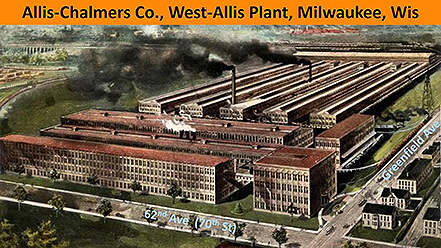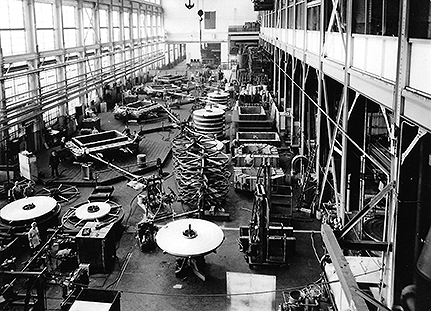
NOW Articles Written By Members
A look back at a common, but classic commemorative – Wisconsin’s Territorial Centennial
A side-tracked story: Mardi Gras Doubloons
A look back at a collecting specialty – the O.P.A. ration tokens of WWII
Bullion And Coin Tax Exemption – Act Now!
Is There A Twenty Cent Piece We Can Add To A Collection
Capped Bust Half Dollars: A Numismatic Legacy
U.S. Innovation Dollars: Our Most Under-Collected Coin?
My 2023 ANA Summer Seminar Adventure
In defense of the American Women's Quarters
A look back in numismatic history – the Hicksville Silver Dollar Hoard
The proofs so few of us collect: Jefferson Nickels
A look back in numismatic history – a story too good to be true
Kilroy promotes war bond sales
Just passing through a short-lived bank
The Kewaunee Line Encased Coin Folder
Lyman C. Draper: Collector, Historian, Genealogist
>> More articles in the Archive
For more NOW Articles Written By Members,
<< More articles in the Archive
West Allis Wartime Silver
[By Dave Herrewig #2382]
There has never been a United States Mint in West Allis, Wisconsin, but in 1943 and 1944 there could have been one. The amount of silver that passed through the city in those two years surpassed the combined usage of the Philadelphia, Denver and San Francisco mints (for the same years) by a large margin.
I had never heard this story of silver until my wife's book club was reading The Girls of Atomic City, the story of women who worked on the Manhattan Project in Oak Ridge, Tennessee. She mentioned that the narrative involved an enormous loan of silver from the Treasury Department for the project. The Manhattan Project led to the building of the first atomic bomb, the one dropped on Hiroshima in 1945.

I started reading and learned that the final manufacturing process before Oak Ridge was at Allis Chalmers in West Allis. What intrigued me most was the huge amount of silver that went into and out of the area. My first thought was that this was a huge melt of silver coins, but it appears that only ingots were used, from the West Point Bullion Depository in New York. Cameron Reed, a physics professor at Alma College in Michigan, has done extensive research on this project and I have relied substantially on his material.
Once the decision was made to pursue an atomic bomb, one question was how to produce enough enriched uranium. The process selected required massive amounts of copper for the windings of the required electromagnets. Copper was in high demand during the war, so silver was selected as a substitute. Without getting into the physics of the process, one needs to know that the silver could make coils which were used to produce a high-intensity magnetic field needed to separate out the critical uranium 235 isotopes.
The War Department would not inform the Treasury Department of the exact use for the silver, but still obtained over 29 million pounds from the West Point Depository. The final total consisted of over 400,000 bullion bars, each about 1,000 fine troy ounces. I'm not certain if the ingots were 0.999 fine but eventually the silver ended up at that level of purity. The metal went first to a refining plant in Carteret, New Jersey where the amount was actually increased with extremely careful cleanup processes which recovered metal lost there in previous years. From there it went to a nearby Phelps-Dodge plant where the final product was coils of silver strips about the size of large car tires.

This wartime photo at Allis Chalmers shows the magnet spools being wound with strips of silver. (Photo courtesy of Milwaukee County Historical Society.)
Most all of this was sent to Allis Chalmers in West Allis, though a small amount went directly to Oak Ridge. The shipments to Allis Chalmers were in sealed cars, all under 24-hour supervision by armed guards. In West Allis, the coils were unwound, combined into larger coils, and wrapped around the steel spools of the magnet casings. This operation took place between February, 1943 and August, 1944. All the work was at the Hawley Works, a roughly two-and-a-half block long building that faced Hawley Road at W. Pierce Street.
Extra security was not needed for the silver once it left Allis Chalmers for Oak Ridge as the coils were inside welded-shut steel casings. When finished, Allis Chalmers produced 940 coils, each about 14 tons. Professor Reed lists Allis Chalmers as producing 27,418,294 pounds of silver magnet coils and 268,745 pounds of silver busbars (conductors); a total of 27,687,039 pounds as a comparison figure with the US Mints. Using figures from the 2016 Red Book, I calculated during the same years the three US Mints used 2,642,429 pounds of pure silver for nickels; 4,022,002 pounds for dimes; 4,063,059 pounds for quarters and 3,763,535 pounds for half dollars; a total of 14,491,025 pounds. Allis Chalmers processed almost twice as much silver as the US Mints!
I haven't read the Milwaukee or West Allis papers for this period but would guess that there wasn't any mention of the nature of this project at Allis Chalmers. In fact, most of the 5,000 employees in Oak Ridge, Tennessee, didn't know what they were working on, either. An interesting note is that President Franklin Roosevelt made a surprise visit to Allis Chalmers in September, 1942, five months before this project began. The company was working on other military projects, too. In fact, Allis Chalmers made three other components for the Manhattan Project besides the silver coils.

The K-25 (Manhattan Project) plant in Oak Ridge,
TN -circa 1944
After the war ended, the understanding between the Treasury and War Departments was that the precious metal would be returned. It was, eventually, but the last of the silver wasn't transferred back to West Point until 1970. Though the process for making weapons grade uranium evolved away from use of electromagnetic coils, the coils were used to separate other atomic elements.
Today, the Hawley Works are long gone, as is Allis Chalmers. Their location on Hawley Road, just south of the Hank Aaron State Trail, is occupied by an office complex, Renaissance Place, which appears to have about the same footprint as the earlier building. Tenants in the complex include Johnson Controls, US Bank, Wheaton Franciscan Healthcare, and CBS 58. There's no sign that so much silver passed through there, but that's what makes history so much fun.
Have an interesting numismatic topic you’d like to share with your fellow NOW members?
Send your article to evan.pretzer@protonmail.com today!!!